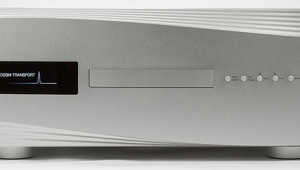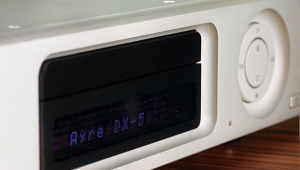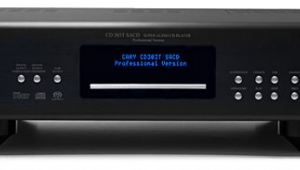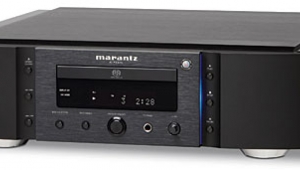| Columns Retired Columns & Blogs |
Marantz SA8001 SACD player Page 2
My recent introspection and the trouble I had detecting sonic differences among the digital front-ends I had on hand motivated me to put together a set of criteria for the evaluation of digital players—one that's consistent with my outlook on life. The list is in no particular order; all of these criteria (except for the last, which I don't mention until the end of the review) should be met by any respectable digital player. Here's the list, with my verdict on the SA8001 for each point.
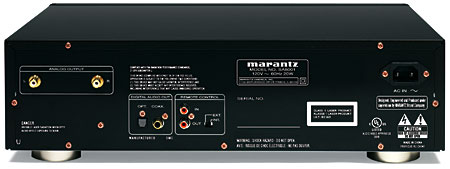
1. A player should play every disc put in it, assuming it supports the format.
Remember, we're reviewing this component like men, not princesses—and for men, utility matters. The SA8001 acquitted itself well by this standard. In contrast to its predecessor, the SA8260, the review unit never failed to play a disc I fed it. Discs that failed in the SA8260 worked perfectly here, including some live Grateful Dead performances recorded on cheap, transparent CD-Rs that other players choke on. So check item 1 off the list. A+.
2. A player ought to make its owner proud.
Aesthetically, the SA8001 is nothing special—about what you'd expect in a $1000 player from a company like Marantz. I regret their use of chintzy fake-gold metal glue-ons, buttons, and letters, which seem the sorts of things Hyundai would do to make a cheap car look like a Cadillac. And, as I've said already, I wish a transport with a better drawer were feasible. Otherwise, the SA8001 is solid, with a rugged power supply and good shielding. The bright copper screws and washers holding the cover in place are an especially nice touch—except that some of the screws had washers while others didn't. Not a big deal, but when you open the box for the first time you want your new toy to have all its parts, and attention to detail is important. I'll let the SA8001 pass on criterion 2, but give it a low pass: B–.
3. A player should provide most of the technical performance the format is capable of delivering, commensurate with its price.
This is largely a measurement question; we'll see what JA discovers on his test bench. But my ears tell me that the SA8001 is well engineered, with distortion and jitter below audible limits. The way it sounded, together with my past experience of Marantz electronics, leads me to predict that it will measure better than some much more expensive models. I'll give it a check and—tentatively—an A, as I await the measurements.
4. A player's ergonomics should be good.
A player should be easy to operate and do what its designer intends it to do. The remote control that comes with the SA8001 is well above average, with well-spaced buttons and a logical layout, and offers some nice control features that aren't found on a lot of other players. The layout of the player itself is sensible: simple and intuitive. The display, the brightness of which is adjustable, is much easier to read than the one on my SA-15S1. Because it's a two-channel player, the SA8001 has no complicated mode switching; and changing to the "Red Book" layer of SACDs was easy and quick. Give it an A for ergonomics.
I'll discuss items 5 and 6 presently. Time to return to the digression.
Zen and the Art of Audio Reviewing
There are people in this world, apparently, who claim that "Red Book" CD playback sends them to the hospital. The hospital part may be urban legend, but it's common to hear analog-preferring audiophiles say that "Red Book" gives them headaches. That part is real.
I mean no disrespect—okay, maybe I mean a little disrespect—when I say that I think these people should have a neurological exam, or something, because clearly they have issues, medical or otherwise. Or perhaps they should bury their too-bright speakers, princess-style, under 20 or so eiderdown mattresses. I am no great fan of "Red Book," but it's been years, maybe decades, since I found the format less tolerable than much of the scratchy, abused vinyl on offer in most record stores. I'd rather listen to a 1950s opera performance with Maria Callas on a CD reissue than to one of those burlap-clad original LPs—talk about headaches.
Yet there's no denying that "Red Book" has a sonic character that sets it apart—and not in a good way—from the best of hi-rez, analog, and live performance. At its best, music, whether live or recorded, just floats there in space, a palpable sonic object you can observe at your pleasure. Take me or leave me, it seems to say, as it somehow washes over you and immerses you in the experience. But "Red Book" shouts at you; it forces itself on you in a way that's neither flattering nor pleasant. Stress ensues.
In trying to make our meanings clear, reviewers often overstate the case, and I'm doing that here. Fact is, I get a lot of pleasure from good music recorded on CDs. "Red Book" is a compromised format, but I can live with it. There's a pea under the mattress, but I sleep just fine, thank you very much.
- Log in or register to post comments

